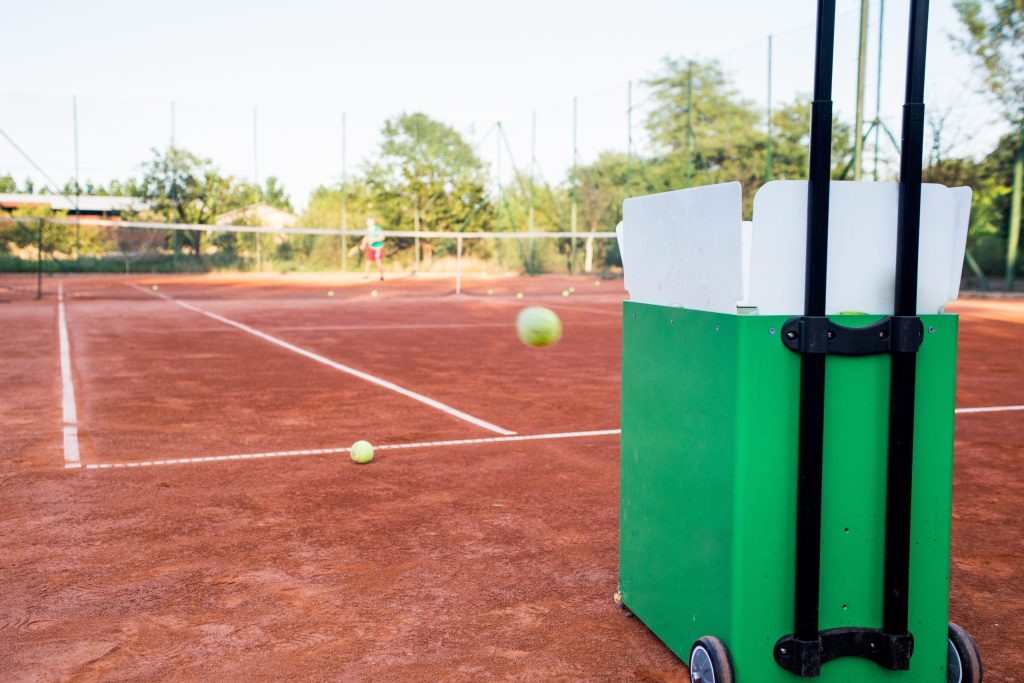
Tennis ball trainers provide an excellent method for honing your skills, offering you the freedom to practice at your convenience. You can choose your location, set your schedule, and master those challenging shots that often miss the mark
Table of Contents
Quick Answer
Name of products | Spinshot Plus 2 | Lobster Elite 2 | Tennis Tutor Plus |
Product image | 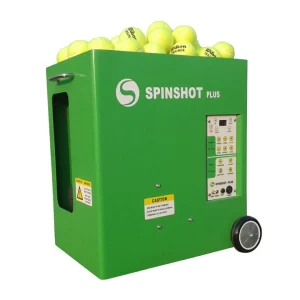 | 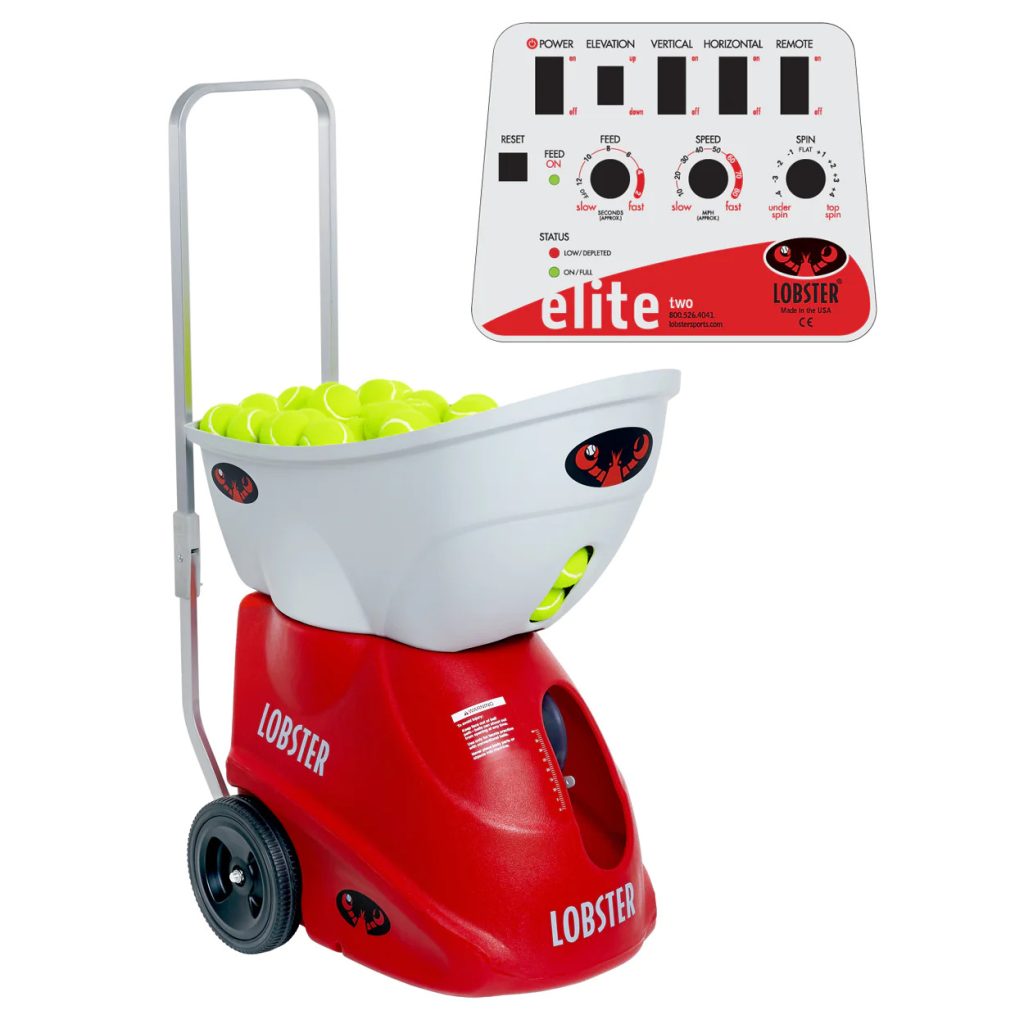 | 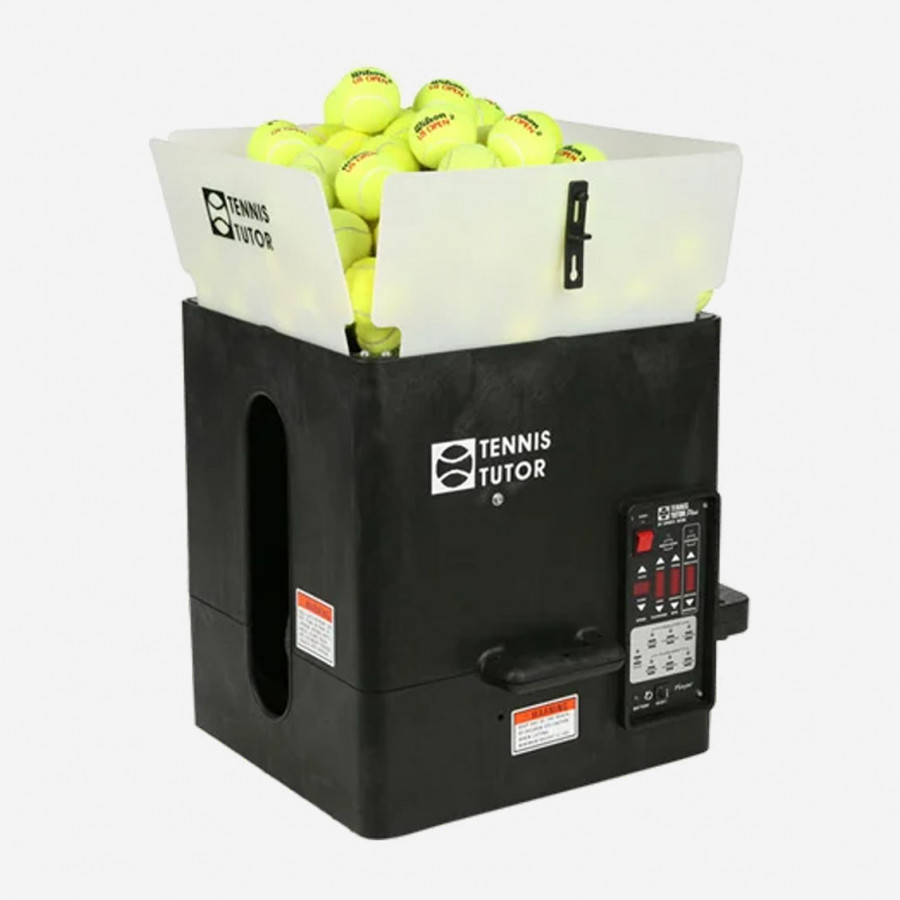 |
Advantages |
|
|
|
Buy Here | |||
Rated by our team |
Our Top Picks
Spinshot Plus 2 – many people prefer Spinshot Plus-2 because of the balance between advanced features and user-friendly design.
⬇️Jump to Review
Lobster Elite 2 – one of the popular tennis ball machines in Lobster’s battery powered portable machine series
⬇️Jump to Review
Tennis Tutor Plus – it boasts a significant ball capacity, holding over a hundred balls for extended play. Players can vary the rate of serve by determining how often the machine releases balls, from fast sequences to longer intervals.
⬇️Jump to Review
Lobster Elite Liberty – a popular tennis machine known for its portability and advanced features at an affordable price.
⬇️Jump to Review
Wilson Portable Tennis Ball Machine – is a reliable training assistant for both beginners and experienced tennis players. Renowned for its rugged construction, this machine is designed with the user in mind and offers many features to help simulate a variety of gaming environments.
⬇️Jump to Review
Below you will find a complete guide on how to choose a tennis machine as well as reviews of our top models, including the best models for beginners, intermediates and advanced players.
Use any of the links below to go to an overview of any particular tennis ball machine.
The 5 best tennis ball machines we have tested are:
Spinshot Plus 2

Rating 9.7*
Details:
The Spinshot Plus-2 tennis ball machine integrates features from both the original Plus and the advanced Player models. Distinctly, it now incorporates the Player’s Drill Maker App functionality for complete drill programmability. Unlike the Player model, the Plus-2 boasts an OLED screen control panel from the Plus, enabling easy access to both horizontal and vertical oscillations without necessitating app usage. Simply press the drill button on the Plus-2 panel and toggle between 12 drills using the + or – buttons. Additionally, the high-spin version is significantly potent, utilizing robust motors. While the standard model slows down with high spin settings, the high-spin version maintains speed. It offers adjustable high speeds and spins without any downsides.
Specs:
- Ball Capacity: Around 120 balls.
- Speed: Up to 68 mph.
- Ball Feed: 2 to 10 seconds.
- Play Time: 2-3 hours per charge.
- Oscillation: Random horizontal, 2-line drills, and programmable.
- Weight: Approximately 42 lbs.
- Power: Battery and optional AC power.
My experience:
Incorporating the standout features from both the Player and Plus models, the Spinshot Plus 2 offers tennis enthusiasts everything they could desire. It boasts a high degree of programmability, a design that’s lighter and more long-lasting than its competitors, and the ability to shoot balls with 19 distinct spin levels and at multiple court angles. To enhance user experience, all these functionalities can be accessed via a user-friendly smartphone app. We wholeheartedly recommend the Spinshot Plus 2 for players aiming for the pinnacle of performance. Additionally, it comes equipped with 12 preset drills, each containing 6 balls. Whether you want to tweak the existing drills or craft your own tailored exercises, this machine offers that flexibility.
|
|
Lobster Elite 2

Rating 9.5*
Details:
The Lobster elite two tennis ball machine, designed for intermediate to advanced intermediate players, incorporates a triple oscillation feature that replicates match play by shooting balls at variable width, depth, and speed, necessitating improved footwork and adaptability. Unlike typical battery-powered machines that move horizontally, elite two also oscillates vertically, producing both short and deep shots. This machine offers match simulations with shots across the entire court – left, right, short, deep – at speeds up to 80 mph, enhancing reaction time and agility. With a “High Spin” feature, it delivers top and underspin, adjustable to minimal spin. For those seeking a broader oscillation range, consider the premium elite three. Lobster provides versatile power options, including internal and external battery machines, and a plug-in variant for continuous play. Proudly made in the USA, it comes with a 2-year warranty.
Specs:
- Ball Capacity: 150 balls.
- Speed: 20 to 80 mph.
- Ball Feed: 2 to 10 seconds.
- Play Time: 4-8 hours per charge.
- Oscillation: Random horizontal, random vertical.
- Weight: Approximately 44 lbs.
- Power: Battery operated.
My experience:
Among the top models we’ve evaluated, the Lobster Elite 2 certainly rivals the Spinshot Plus 2 for the premier position. The best choice depends on the specific features you require as a player. While the Lobster Elite 2 might not offer the same programmability as its predecessor, it boasts remarkable features that somewhat compensate for this: It has the capability to launch balls at speeds of up to 80 mph (129 kph) and can elevate shots to an angle of 60 degrees. A standout aspect of this machine is its impressive battery endurance – allowing continuous use from 4 to 8 hours. This makes it a preferred option for tennis coaches and clubs. Additionally, the Lobster Elite 2 can accommodate up to 150 balls, a consistent feature across all Lobster models.
|
|
Tennis Tutor Plus

Rating 9.5*
Details:
The Tennis Tutor Plus boasts all the features of the standard Tennis Tutor and further incorporates topspin and underspin functionalities, adjustable via a dial. Standing around eight inches taller than its standard counterpart, this machine can hold up to 150 balls, with ejection speeds ranging from 10-85 MPH and a ball feed rate between 1.5 to 12 seconds. Its built-in oscillator offers a variety of trajectories from groundstrokes to lobs. Powered by a heavy-duty battery, users can expect a playing time of 4 to 6 hours, with a typical recharge time of 12 hours. The device measures 20″H x 19.5″L x 20″W when the hopper is closed. All Tennis Tutor ball machines come with a three-year warranty on parts and labor, a smart charger, and extended warranty options.
Specs:
- Ball Capacity: 150 balls.
- Speed: 10 to 85 mph.
- Ball Feed: 1.5 to 10 seconds.
- Play Time: 2-3 hours, extended battery offers more playtime.
- Oscillation: Random horizontal.
- Weight: Around 46 lbs for the standard model.
- Power: Battery with an optional external AC power supply.
|
|
Lobster Elite Liberty

Rating 9.3*
Details:
The Lobster Elite Liberty stands out as an affordable yet effective tennis ball machine, offering solid performance without the hefty price tag of its competitors. This machine is particularly suitable for those at beginner to intermediate skill levels. One of its remarkable features is its ability to launch balls at speeds reaching 80 Mph (129 Kph) — a surprising capability given its price point. Moreover, its ball capacity of up to 150 balls means fewer interruptions to collect balls during practice, a feature often reserved for pricier models. However, it does come with a few limitations: it doesn’t support random vertical shots (though you can manually adjust the shot height), and its battery life ranges from 2 to 4 hours per session. For those who aren’t keen on customizing drills, the Lobster Elite Liberty offers an attractive blend of higher-end attributes without the associated costs. For a comprehensive analysis of this model, take a look at our detailed Lobster Elite Liberty review, or if you’re on a budget, explore our guide to the best value tennis ball machines. Our expert panel has named this model the top tennis ball machine available for under $1000.
Specs:
- Ball Capacity: 150 balls.
- Speed: 20 to 70 mph.
- Ball Feed: 2 to 10 seconds.
- Play Time: 2-4 hours per charge.
- Oscillation: Random horizontal.
- Weight: Approximately 35 lbs.
- Power: Battery operated.
|
|
Wilson Portable Tennis Ball Machine
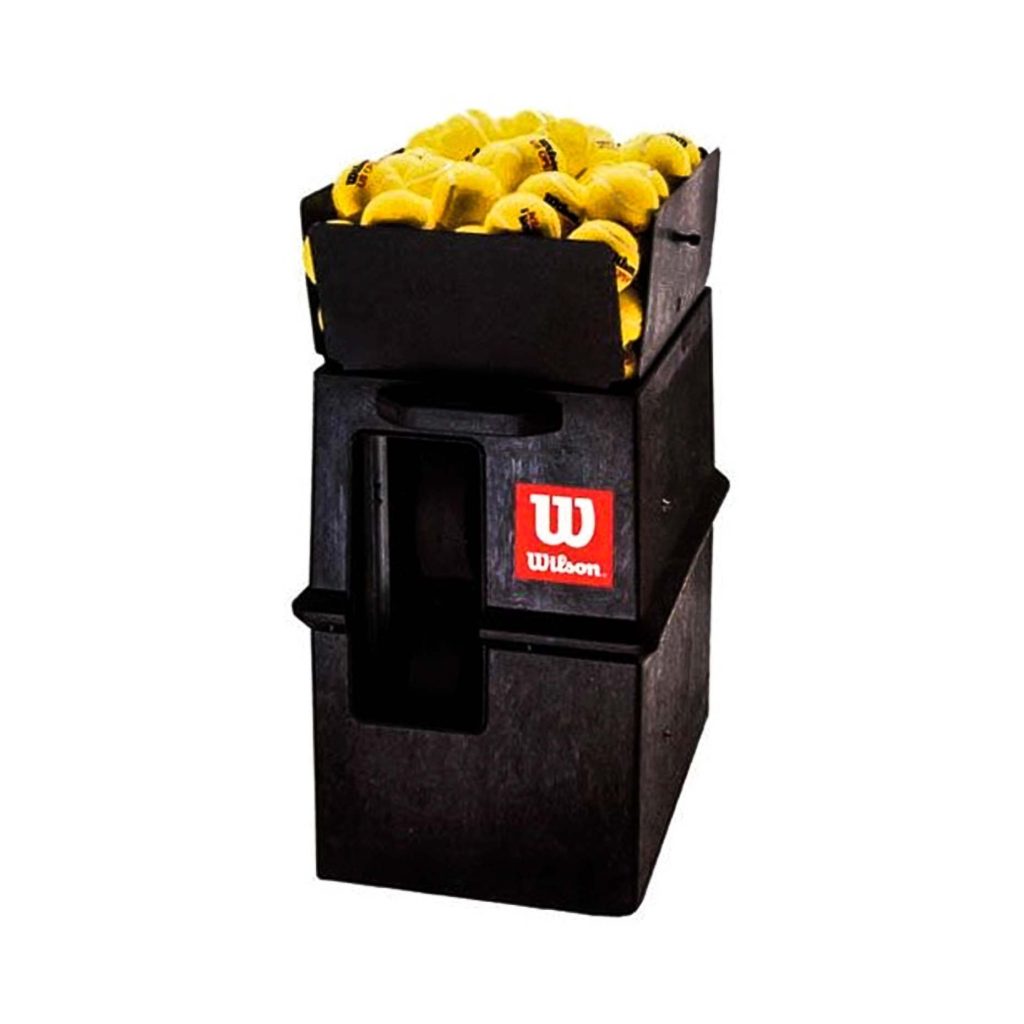
Rating 9*
Details:
No rundown of top tennis ball machines is complete without a mention of a model from the renowned Wilson brand. Though we categorize this as a machine best suited for beginners to intermediate players, it boasts features commonly found in premium models, like a swift feed rate of 1.5 seconds and advanced electronic elevation controls. However, it does have its constraints. It has a ball capacity of 110, while many machines can accommodate 120 balls or more. The top speed for ball delivery is 75 Mph (120 Kph). Yet, realistically, only expert players require (and can handle) faster speeds. Given that this machine isn’t targeted at such players, we don’t see this as a significant drawback. If you’re on a budget yet seeking a reliable tennis ball machine, this model should be on your radar. Not only does it come at a more affordable price point compared to others on this list, but it also carries the trusted Wilson name, a stalwart in the tennis equipment industry.
Specs:
- Ball Capacity: Not precise but generally around 110 balls.
- Speed: Variable, up to approximately 75 mph.
- Ball Feed: 1 to 10 seconds.
- Play Time: 3-4 hours per charge.
- Oscillation: Random horizontal.
- Weight: Typically around 38 lbs.
- Power: Battery operated.
|
|
How to Choose a Ball Machine
While choosing and purchasing a tennis ball machine isn’t overly complicated, there are several factors to consider during the evaluation and buying process.
Budget
Various tennis ball machines cater to diverse budgets. Similar to tennis racket stringing machines, some of the premium models can have a price tag exceeding 2000€. These high-end machines offer more advanced features, but it’s essential to determine which functionalities are crucial for you. For those on a budget and seeking a cost-effective option, there are affordable tennis ball machines available.
Skill level
For beginners, a broad range of tennis ball machines may suit their needs, as their requirements might be simpler than those of seasoned players. Here are some machine features, differentiated by skill levels:
- Ball Speed: For someone just starting, a machine reaching speeds of 40 mph (64 kph) should suffice. Yet, seasoned players might seek machines that can achieve speeds closer to 80 mph (129 kph).
- Ball Capacity: A machine holding 40 balls might be ideal for newcomers who may not have the stamina for extended sessions. In contrast, seasoned players might favor machines with larger capacities.
- Spin: Some machines deliver balls without any spin, while others offer varied topspin or backspin levels. Experienced players might seek this feature to mimic real-game scenarios.
- Oscillation: The machine’s capability to alternate ball delivery patterns may not be a priority for novices but is often desired by more adept players.
- Drills: Introducing diverse play scenarios through drills might be more relevant for skilled players, whereas beginners might not require such complexity.
That said, those new to tennis might opt for features tailored to experienced players, ensuring they can grow with the machine over time.
Portability & Convenience
If you lack a tennis court at your residence, portability is likely a primary consideration, and there are two key aspects you should remember.
Size
A more compact machine offers the advantage of easier mobility and can conveniently fit in your car. Additionally, some tennis ball machines come with collapsible features, making them even more travel-friendly.
Weight
A machine weighing under 50 lbs is typically portable for most players, though pushing this limit might be challenging. It’s crucial not to risk injury when transporting your ball machine.
Some ball machines powered by batteries offer either internal or external battery options. Choosing the external battery can reduce the weight by approximately 10-15 lbs (5-6 kg) during transport.
However, it’s worth noting that an overly light machine might shift when launching balls at higher velocities. Finding a balance is key, with a machine weighing between 35-45 lbs (16-20 kg) being ideal.
Power
Ball machines can be powered by a battery, direct electricity from an outlet, or a combination of both. For those seeking portability, a battery-powered option would likely be the best choice.
Sound
The noise level of a ball machine, often overlooked, is an essential factor to consider.
If you don’t have a private court or play on a secluded court, it’s crucial to think about how loud the machine is to ensure you don’t disrupt other players nearby.
Ease of Use
While most ball machines come with an initial learning phase to familiarize yourself with the settings, some can be cumbersome, requiring frequent manual adjustments for different shots.
Some machines feature memory capabilities, allowing them to recall your preferred settings, saving you from reconfiguring each time. Additionally, machines with remote controls can save you the hassle of walking back and forth to make tweaks.
Ultimately, a user-friendly machine increases the likelihood of consistent use, making ease of operation a factor worth considering.
Why Buy a Tennis Ball Machine?
The more compelling your motivation for purchasing a ball machine, the more frequently you’ll use it, ensuring you get your money’s worth from an investment that can range from several hundred to thousands of dollars.
Given this, here are some prevalent justifications for investing in one, either for personal use or for your family. Additionally, we’ve provided some insights to ponder for each reason.
Limited Access to Hitting Partners
I often come across this sentiment. Living in a less densely populated area might mean limited opportunities to find regular tennis partners.
This could be due to a lack of tennis enthusiasts in your region or the challenge of finding players at your skill level.
It’s an undeniable hurdle many players face, and it presents a solid case for investing in a tennis ball machine.
However, it’s worth pondering how much you value the social aspect of the game. If the camaraderie of tennis means a lot to you, a ball machine won’t fill that void.
Target Practice
Practice is key in any learning journey, and tennis is no exception.
While I always recommend beginners to get proper coaching and grasp the right techniques, the onus is on the learner to put those lessons into practice for tangible improvement.
A tennis ball machine can be invaluable here. It offers consistent opportunities for a player to repeatedly practice a specific shot, fostering muscle memory and boosting confidence. However, before committing to a purchase, I’d suggest renting one first.
While it might sound great to practice a particular stroke repeatedly, some might find the repetitive nature monotonous. Trying it out and seeing how you feel after continuously hitting many forehands will give you insight into whether it’s the right choice for you.
Additionally, if you’re aiming for repeated practice, ensure the ball machine you opt for has a large enough capacity, so you don’t need to pause frequently to collect balls.
An Enjoyable Form of Exercise
If the idea of traditional exercise routines like running, gym workouts, or biking doesn’t appeal to you, then a ball machine could offer an engaging way to keep fit through a sport you love.
However, I’d urge you to think about the machine’s portability and accessibility. If it’s too cumbersome or you don’t have easy access to tennis courts, it might deter you from regular practice.
Before making a purchase, consider renting a ball machine to test the waters. While many relish playing tennis, some find it less thrilling without the unpredictability of a human opponent. It’s worth experiencing this aspect before making a commitment.
Supplement Lessons
One compelling reason to invest in a ball machine is to complement group or individual tennis sessions. While lessons are invaluable, a significant part is often spent practicing drills with the coach or fellow participants.
Especially in group settings, participants take turns as the coach serves the balls. Due to class size, some might not get as many opportunities to hit the ball as they’d prefer. This is where a ball machine becomes beneficial.
By evaluating your lesson frequency and expenses, the machine might even become a cost-effective choice. For instance, if you’re spending $50 on a weekly lesson, cutting back might save you $100 a month – funds that can be allocated towards a ball machine.
Teaching Tool
Ball machines can be a valuable asset for tennis instructors keen on taking a more hands-on approach during training.
Traditionally, instructors would stand across the net, feeding balls from their basket, which works well. But when it comes to giving detailed feedback, demonstrating a specific shot, or guiding a player through a movement, this setup can be limiting. Instructors may have to halt the session, gather at the net, or even cross over to the student’s side.
If a coach wishes to showcase a particular stroke or movement, there isn’t anyone on hand to serve the ball. While a ball machine isn’t an essential teaching tool, its addition can enhance the learning experience. Moreover, as an investment, it can eventually pay for itself when integrated into teaching sessions or rented out.
Guarantees & Warranties
While you’d ideally never need to use a warranty, it’s crucial to know its coverage, terms, and consider the option of an extended warranty.
Money-Back Guarantees
Most tennis ball machines offer some sort of return policy or satisfaction guarantee, typically ranging from a week to about 30 days.
Given the machine’s weight and the high shipping costs, there are usually specific terms attached:
- Duration: It’s essential to confirm the length of the guarantee. While most users retain their machines, it’s wise for buyers to mark a reminder on their calendars to decide whether to keep or return the product. Make sure you have sufficient time post-purchase to test the machine within the guarantee period. Also, understand the exact terms of the return deadline, such as whether the machine needs to be returned, shipped out, or just notified for return within that period.
- Shipping Costs: If you decide to return the machine within the stipulated period, anticipate bearing the return shipping expenses. Remember to keep the original packaging for hassle-free returns. Refunds typically won’t cover the initial shipping costs.
- Restocking Fees: Many companies will levy a restocking fee when you return a machine. This fee, which often ranges between 5-10% of the machine’s price, covers the costs of inspecting, testing, and repackaging the product.
- Accessories: If you’ve bought accessories like tennis balls and used them, those are generally non-refundable. To reduce potential return costs, consider purchasing a smaller, cheaper pack of balls initially if you have any reservations.
While the majority of buyers don’t utilize the return policy and a 30-day window might seem short, it’s vital to be informed, especially if unforeseen financial challenges arise soon after your purchase.
Warranties
A warranty provides assurance regarding the durability and quality of the machine you’re purchasing, but it often comes with limitations.
- Duration: Similar to return policies, the first thing to assess in a warranty is its tenure. It defines how long any potential issues with the machine will be covered. Some manufacturers also offer extended warranty options. To determine if the extended warranty is a worthy investment, inquire about the machine’s typical failures, the replacement costs for those parts, and any associated servicing fees. Comparing these costs with the extended warranty’s price can guide your decision.
- Coverage: After determining the warranty’s duration, it’s essential to know exactly what is included or excluded. Some manufacturers may exclude parts that undergo usual wear, such as the throwing wheels. Knowing these exclusions and the costs to replace such parts will keep you informed. Occasionally, companies may provide different warranty periods for separate components; for example, batteries might have a shorter coverage span.
- Shipping: If minor issues arise, companies often send replacement parts, which are easily installable. For more complex issues, you might need to return the machine for repair. Typically, you’ll bear the shipping costs to and from the service center.
- Transferability: Check if the warranty is transferable to a subsequent owner. If you plan to sell the machine in the future, a transferable warranty adds value. Conversely, if you’re considering a pre-owned machine, it’s crucial to verify with the manufacturer whether the warranty can be transferred.
From my observation, ball machines tend to be robust and infrequently face problems. Nonetheless, it’s always beneficial to understand the warranty terms and coverage.
Conclusion: Our pick for the best tennis ball machine
Tennis ball machines are a great way to quickly improve your game. They are reliable, do not get tired and never miss.
If we had to choose, our choice would be:
- The Tennis Tutor Plus is a versatile and durable ball game machine suitable for players of all levels. Whether you’re a beginner looking to practice basic shots or an advanced player looking to hone certain skills, this machine can be a valuable addition to your training program.
- Wilson Portable Tennis Ball Machine is the best choice for tennis players of all skill levels. The combination of advanced features and user-friendliness ensures that players can get the most out of their workouts
FAQ
How long does the battery of a tennis ball machine typically last on a full charge?
Most tennis ball machines can operate for 2 to 4 hours on a full charge. The exact duration depends on the model and the settings being used. High-speed and oscillation settings can drain the battery faster.
Can I use regular tennis balls in a tennis ball machine, or do I need special balls?
Yes, you can use regular tennis balls in most tennis ball machines. However, there are pressureless tennis balls available that maintain their bounce longer than regular balls, making them a popular choice for frequent machine use.
Is it possible to adjust the speed and spin of the balls thrown by the machine?
Yes, most modern tennis ball machines allow users to adjust both the speed and spin of the balls. This feature helps simulate different types of shots, from flat strokes to topspin and backspin.
How often do I need to maintain or service my tennis ball machine?
Regularly cleaning the machine and checking for any signs of wear is recommended. Depending on usage, a thorough servicing every 1-2 years can help prolong the machine’s lifespan. Always consult the user manual or manufacturer’s guidelines for specific maintenance recommendations.

I’m Heorhii Rysak, a go-to sports enthusiast and blogger. My fascination with sports began in my childhood with karate, setting the foundation for my love of physical fitness. Over the years, I’ve delved into various disciplines, including martial arts and CrossFit, and developed a passion for tennis. I bring a wealth of practical experience to my blog, where I share equipment reviews, workout plans, and fitness advice. My goal is simple: to inspire and assist you in your journey toward better health and performance.